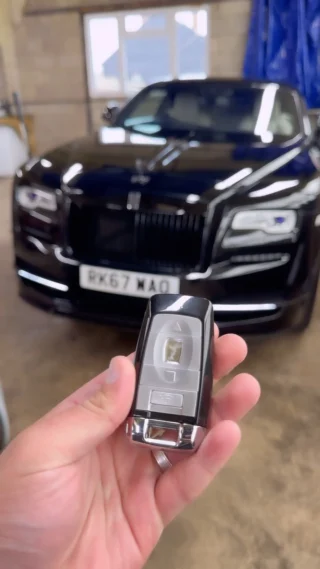5 Reasons To Be An Online Car Key Transponder Programming And 5 Reasons You Shouldn't
Understanding Car Key Transponder Programming
In today's automotive landscape, the combination of innovative innovation has become synonymous with vehicle security. One of the most considerable advancements in this location is the introduction of transponder keys. Car key transponder programming is an essential process that makes sure lorries are secure from unapproved access while providing convenience to owners. This post explores what transponder keys are, how they work, the programming process, and responses to some frequently asked questions.
What is a Transponder Key?
A transponder key is a type of ignition key that includes a small embedded microchip. This chip communicates with the vehicle's immobilizer system. Transponder keys are created to boost vehicle security by preventing hot-wiring and unapproved engine begins.
Key Features of Transponder Keys:
- Embedded Microchip: Each key includes a special code that represents the vehicle's ignition system.
- Immobilizer System: This system recognizes the key's distinct code and enables the engine to begin just if the appropriate key is utilized.
- Enhanced Security: Transponder keys are significantly more difficult to duplicate than traditional keys, decreasing the risk of theft.
How Transponder Keys Work
Transponder keys run on a simple principle of radio frequency recognition (RFID). When the key is placed into the ignition or brought near the vehicle, the list below series occurs:
- Signal Transmission: The vehicle's ignition system sends out a radio signal to the transponder key.
- Code Response: The embedded chip in the key gets this signal, activates, and returns its special code.
- Verification: The vehicle's computer system confirms the received code. If it matches the saved code, the engine will start; if not, the engine remains debilitated.
Benefits of Transponder Technology:
- Improved theft avoidance.
- Benefit of keyless vehicle starting (in some systems).
- Reduced costs related to insurance premiums due to boosted security procedures.
The Car Key Transponder Programming Process
Programming a car key transponder is a critical step that enables a brand-new key to interact with the vehicle's immobilizer system. The process can differ based upon the make and design of the car but normally includes the following steps:
Steps Involved in Transponder Key Programming:
Obtain a New Transponder Key: Owners must initially get a blank transponder key suitable with their vehicle.
Access the OBD-II Port: For modern cars, programming usually needs an On-Board Diagnostics (OBD-II) scanner that connects to the OBD-II port.
Turn on the Ignition: The ignition needs to be turned to the “On” position without beginning the engine. This permits the system to acknowledge that a brand-new key is to be configured.
Follow Programming Procedure: Depending on the vehicle, follow the specific programming actions provided by the maker, typically detailed in the owner's handbook. This might include pressing specific buttons in a particular order.
Test the Key: After programming, it's vital to evaluate the key by trying to begin the engine. If effective, the key is properly set.
Tips for Successful Programming:
- Consult an expert locksmith or dealer for complex programming procedures.
- Ensure battery levels in the key fob and vehicle are adequate.
- Follow the instructions closely to avoid mistakes.
Typical Issues with Transponder Key Programming
Regardless of the seemingly simple process, various problems might emerge throughout programming. Below are some common obstacles:
- Key Compatibility: Using an incompatible key can result in programming failures.
- Faulty Equipment: A malfunctioning OBD-II scanner may prevent access to the programming menu.
- Weak Key Batteries: Insufficient power in the key fob can interrupt interaction.
Regularly Asked Questions (FAQs)
1. Can I configure my transponder key myself?
While lots of vehicles enable DIY programming, some models need specific devices or software. If uncertain, it's best to speak with an expert locksmith or your vehicle dealer.
2. What if I lose my transponder key?
If a transponder key is lost, it's advisable to call a certified automotive locksmith or your dealer for a replacement. They can configure a new key based upon your vehicle's VIN (Vehicle Identification Number).
3. How much does it cost to configure a transponder key?
The cost differs commonly, depending on the vehicle make and model, and whether you select to go through a car dealership or a locksmith. Prices typically vary from ₤ 50 to ₤ 150.
4. What occurs if my transponder key stops working?
If your transponder key quiting working all of a sudden, it could be due to a dead battery or concerns with the vehicle's immobilizer system. It's suggested to have both the key and the vehicle checked by a professional.
5. How often should I replace transponder key batteries?
Transponder key batteries should be changed every 2 to 3 years, though this can vary based on use. Signs of a dying battery include trouble beginning the vehicle or the key fob not working at all.
Car key transponder programming is a crucial procedure for modern-day vehicle security and convenience. Comprehending how transponder just click the following document and how they are configured can empower vehicle owners to handle their vehicle security efficiently. As car key replacement estimates continues to evolve, staying notified about these improvements will help owners safeguard their possessions and ensure their automobiles operate smoothly.
Summary Table: Key Features of Transponder Keys
Feature
Description
Embedded Microchip
Includes a distinct code for vehicle recognition
Immobilizer System
Avoids unapproved engine starts
Boosted Security
Hard to duplicate compared to traditional keys
With advancements in technology, the significance of understanding and effectively handling car key transponder systems can not be overstated. Boosted vehicle security not just safeguards your financial investment however also makes sure comfort on the roads.
